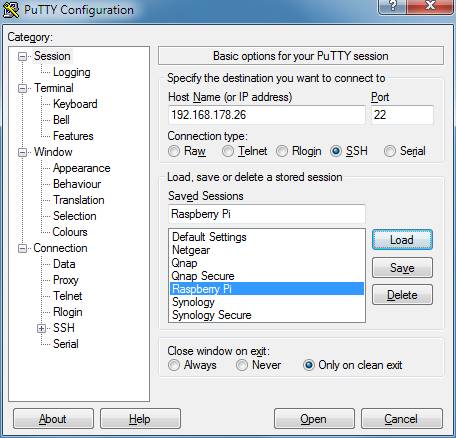

Sign up at (opens new window) and get your authentication token.
#Iot ssh tunnel install
# Step 1: Download and Installĭownload and install (opens new window) the SocketXP IoT agent on your IoT or Raspberry Pi device. A device stream is mediated by an IoT Hub streaming endpoint which acts as a proxy between your device and service endpoints. Once an IoT device allows a remote user to form an SSH tunnel, and to use it as a SOCKS proxy, the attacker is not limited to only mounting attacks against. It can connect more than 10K RPi or IoT devices for a single user account.įollow the below instructions to remote SSH into your IoT or Raspberry Pi device. Azure IoT Hub device streams facilitate the creation of secure bi-directional TCP tunnels for a variety of cloud-to-device communication scenarios. You can access your IoT device or Raspberry Pi from the SocketXP Cloud Gateway Portal. The SocketXP agent will securely connect (using a SSL/TLS tunnel) to the SocketXP IoT Cloud Gateway using an authentication token. Install a simple, secure and lightweight SocketXP IoT agent on your IoT device or Rasperry Pi. # How SocketXP IoT Remote SSH solution works
#Iot ssh tunnel how to
In the following section, we'll discuss how to setup Raspberry Pi or IoT device for remote SSH access over a 3G or 4G LTE or 5G cellular network using SocketXP. SocketXP IoT Platform provides remote connectivity solution to IoT or Raspberry Pi devices in the field using secure tunnels without having to setup port-forwarding or hack the configuration in your cellular modem or dongle. IoT or Raspberry Pi devices when placed in open fields or remote rural locations where internet access via WiFi is not readily available, 3G or 4G LTE dongle or 4G/5G modems or cellular routers could be used to get internet access to the Raspberry Pi in the field. IoT or Raspberry Pi remote SSH access is key to monitoring, controlling and debugging industrial machineries, automobile fleet, environmental IoT sensors and smart city IoT devices from far away remote locations when human access to such devices is not immediately possible.Įnvironment researchers and scientists use Raspberry Pi based IoT devices to collect and stream environmental data (as MQTT data stream) to a server(MQTT Broker) in their research institution's network. The IoT client instantiates the local proxy, which uses this information to connect to the destination application.# IoT Raspberry Pi SSH Remote Access over 3G, 4G LTE, or 5G cellular network The IoT client running on the destination device reads this value and uses it to look up a port or an IP address and a port. The name of the IoT thing to which you want to connect.Ī list of service names that identify the target application. The mode of the client that will use the client token, which can be either the source or destination, or both source and destination. The tunnel for which you want to rotate the access tokens. Requires permission to access the CloseTunnel action. When a CloseTunnel request is received, we close the WebSocket connections between the client and proxy server so no data can be transmitted. close_tunnel ( **kwargs ) ¶Ĭloses a tunnel identified by the unique tunnel id. Secure Tunneling does not require updates to your existing inbound firewall rules, so you can keep the same security level provided by firewall rules at a remote site. Returns True if the operation can be paginated,Ĭloses underlying endpoint connections. Secure Tunneling is a feature of AWS IoT Device Management that helps customers accessing remote devices over a secure connection that is managed by AWS IoT. RomSShell is an SSH toolkit that is often used in conjunction with RomCLI to deliver secure remote device management capabilities to many IoT applications. For more information about using AWS IoT secure tunneling to connect to remote devices, see AWS IoT secure tunneling in the AWS IoT Developer Guide. Operation as client.create_foo(**kwargs), if theĬreate_foo operation can be paginated, you can use theĬall client.get_paginator("create_foo"). Secure tunneling uses MQTT over WebSockets to make these connections so that you can open an SSH connection to the device by using a tunnel that is managed by AWS IoT. Method name is create_foo, and you'd normally invoke the This is the same nameĪs the method name on the client. Parameters operation_name ( string) - The operation name. client ( 'iotsecuretunneling' )Ĭheck if an operation can be paginated.


 0 kommentar(er)
0 kommentar(er)
